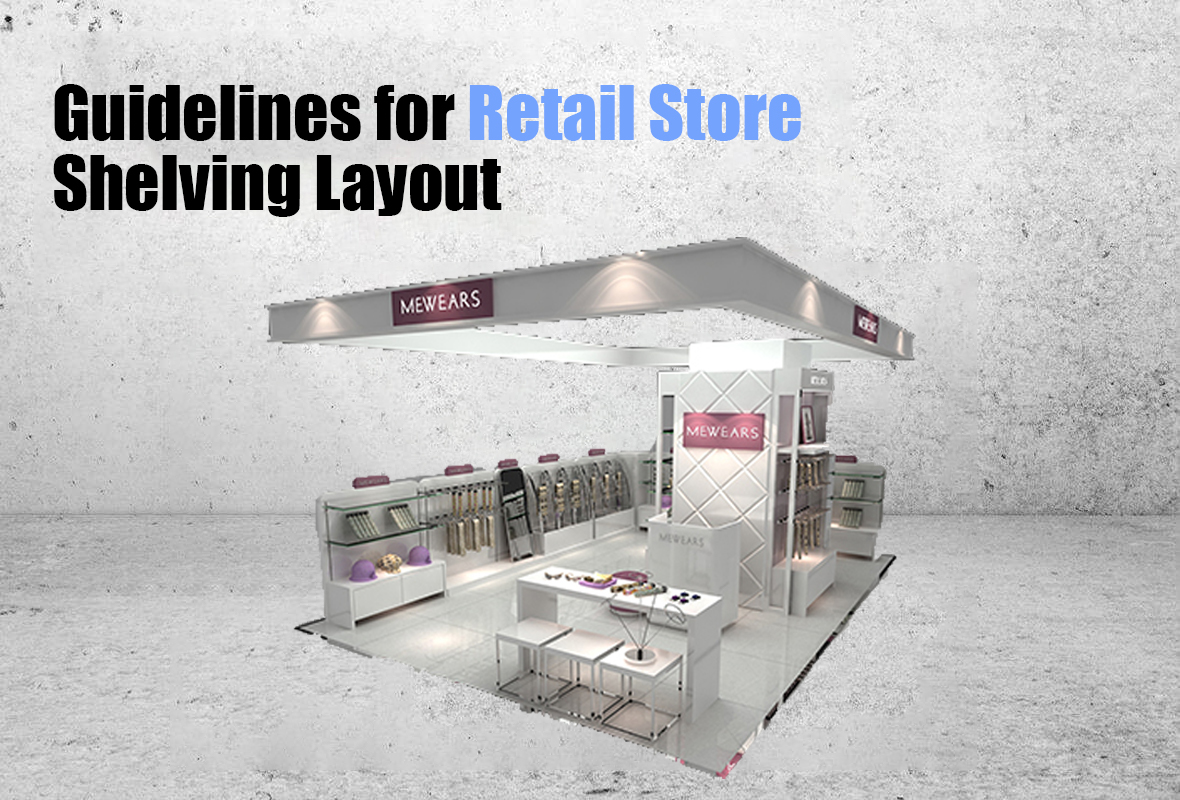
The layout of a retail store refers to the fixed fixtures, product displays, and merchandise display methods inside the store. Different store layouts can greatly affect many aspects of the store, with the most important being the customer shopping experience. A suitable store layout can not only help you highlight the best-selling products in the store, but also increase the shopping time and improve the customer experience. Customers prefer a well-organized store, so how do you choose the right store layout for your business?
Today, you have many choices, and unless you know the key to visual merchandising for your store, you may be overwhelmed and confused by too many options.
In this article, we will delve deeper into helping you choose the visual merchandising solution (display rack layout guide) that is best for your retail store. We will address the following questions:
※ What is visual merchandising (store layout)?
※ The advantages and disadvantages of various store layouts
※ How to choose the right layout for your store
With over 15 years of experience in the Chinese retail display props industry, we have insider knowledge to provide practical purchasing advice for design companies and retail store buyers.
So, let's get started.
(Note: There are many different names used to describe display shelves. These include Display Shelf, Display Rack, Display Fixture, Display Stand, POS Display, POP Display, and Point Of Purchase. However, for consistency, we will refer to Display Rack as the naming convention for
Table of Contents:
1. What is visual merchandising (store layout)?
Visual merchandising, also known as store layout or retail design, is the practice of creating an engaging and visually appealing environment in a retail space. It involves designing the layout of the store, arranging product displays, and selecting lighting, colors, and textures to create a visually appealing atmosphere that promotes sales and enhances the overall shopping experience for customers. Effective visual merchandising can attract customers, encourage them to explore the store, and ultimately drive sales.
Before choosing the layout of retail stores, we should first make clear what are the determinants of store layout. Through research, it is not difficult to find that most people will first look to the left and then to the right when entering a retail store, and the movement path in the store also prefer to move from right to left counterclockwise. Therefore, we should combine the principles of aesthetics and psychology. Improve the customer experience in the store and lead them to the products we most want customers to buy.
The following will introduce five commonly used store layouts. I hope you can choose the most appropriate store layout according to the size, product, style, etc.
2. Introduction and Recommendations for 5 Common Retail Store Layouts.
2.1 Free flow layout
Free flow layout is a bold attempt to break the conventional layout. There is no deliberate rule in this layout, and customers can freely choose their own moving path. Of course, the advantage of this way is that customers will certainly wander in front of the goods they are most interested in.
Advantages:
1. Suitable for small space
2. Is it easier to find out what products customers like
3. Suitable for retail stores with few products
Disadvantages:
1. Unable to guide customers directively
2. More products will clutter the store
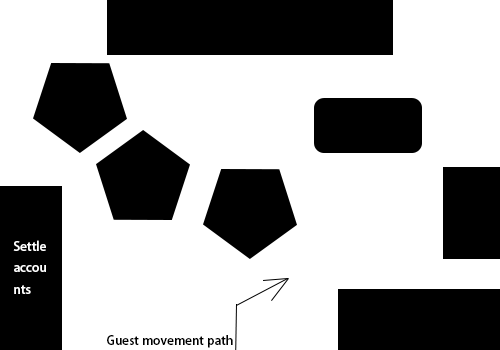
1. Utilize Space: Free flow layout is usually used to display goods of various sizes, shapes, and colors, so it is important to fully utilize the display space. Use height and width as much as possible to create multi-level and multi-angle display spaces.
2. Categorize Products: Categorize the products for quick and easy customer access. Products can be categorized by type, function, color, etc.
3. Create Visual Effects: Use different display props and accessories to create attractive visual effects. For example, when displaying kitchen products, use a simulated kitchen scene to showcase the products and allow customers to better understand their usage and effect.
4. Increase Interactivity: Incorporate interactive elements into the display to engage customers. For example, when showcasing electronic products, set up an experience area to allow customers to personally experience the product's features.
5. Update Displays: Regularly update displays according to seasons, holidays, or promotions. This can grab customer attention and make them feel refreshed and surprised.
2.2 Grid store layout
Stainless Steel is an alloy steel mainly composed of iron, chromium, nickel, and a small amount of other elements. The following are the advantages and disadvantages of Stainless Steel material:
Advantages:
1 .Customers can increase their browsing time in the store
2. You can selectively place promotional products where customers can see them
3. This layout has been fully practiced in practice
4. Suitable for a wide variety of goods, a large number of stores
Disadvantages:
1. Customers may not be able to find the products they need directly
2. Customers may not like your store's product assortment
3. The shopping experience is low
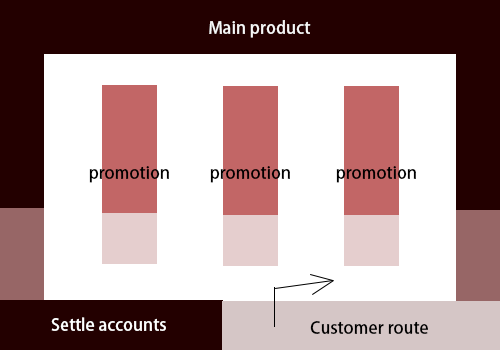
Suggestion:
1. Use consistent shelving and fixtures: A grid layout relies on a consistent pattern of fixtures and shelves, so make sure you use the same types of fixtures and shelving throughout the store.
2. Use straight aisles: Straight aisles help customers navigate the store and make it easy to find what they're looking for. Make sure your aisles are wide enough to accommodate shopping carts and other customers.
3. Create focal points: Use end caps and other displays to create focal points throughout the store. This will help draw customers in and keep them engaged with your merchandise.
3. Make use of signage: Signage is important in any store layout, but it's especially important in a grid layout. Use signs to help customers find their way around the store and locate specific products.
Keep it organized: A grid layout relies on organization and consistency, so make sure you keep your store neat and tidy. Regularly restock shelves and make sure everything is in its proper place.
By following these tips, you can create an effective and efficient grid store layout that will help you maximize your sales and provide a great shopping experience for your customers.
Advantages:
1. Suitable for slender retail stores
Shortcomings:
1. Store layout is more compact, customer shopping experience decreased
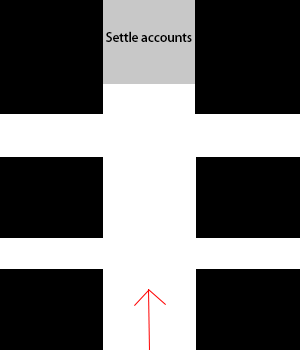
Suggestion:
1. Create clear sightlines: Use signage and visual displays to help guide customers through the store, highlighting key products and promotions.
2. Group related products: Grouping similar products together will make it easier for customers to find what they are looking for.
3. Allow for plenty of space: The angled aisles of a herringbone layout can make it feel more spacious than a traditional layout, but it's still important to allow enough space for customers to move comfortably through the store.
4. Consider lighting: Lighting can play a big role in creating a welcoming and engaging atmosphere in a herringbone layout. Use a combination of ambient lighting and spotlighting to draw attention to key products and displays.
Overall, the herringbone layout is a great choice for retailers who want to create a visually engaging and dynamic shopping experience while maximizing the use of their floor space.
The store-in-store retail layout, also known as the boutique store layout, is a kind of free flow layout, which greatly improves the user's freedom, they can buy complementary products in different brand areas, we can use fixtures, walls, aisles, and so on to create a sense of a small shop inside the store.
Advantages:
1. Greatly increased the cross-selling probability
2. Can highlight the style of different brands
Disadvantages:
3. Customers may not walk through the entire store
4. It is difficult for stores to have a clear order for product classification
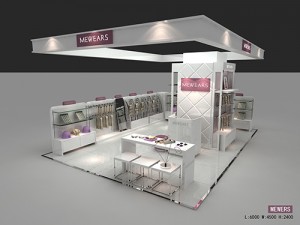
Suggestion:
1. Create a clear brand identity: The shop-in-shop should have a distinct brand identity that is consistent with the larger retail space but also unique enough to stand out.
2. Maximize the use of space: Space is often limited in shop-in-shops, so it's important to use the available space effectively. Use versatile display fixtures and furniture to create a functional and appealing environment.
3. Provide a seamless customer experience: The transition between the larger retail space and the shop-in-shop should be seamless, with a clear path and a cohesive design that maintains the overall shopping experience.
4. Showcase the products: Shop-in-shops are often used to showcase a particular product or collection, so it's important to display the products in an attractive and engaging way. Use creative displays and lighting to highlight the products.
5. Create a sense of exclusivity: Shop-in-shops are designed to create a sense of exclusivity and elevate the shopping experience. Use unique fixtures and decor to set the shop-in-shop apart from the rest of the retail space.
By following these recommendations, shop-in-shops can provide an engaging and immersive shopping experience for customers while also driving sales for the brand.
2.5 Geometric retail store layout
This is the most creative layout of retail stores at present. Its main sales target is to target the new generation of young people. This layout of retail stores should not only make efforts in the layout, but also add more uniqueness in the display device and decoration style of the store.
Advantages:
1. It can attract more young people to shop
2. Help to create a personalized brand
Disadvantages:
1. Not very suitable (for unfashionable customers), for whom this kind of shop may be too strange
2. Waste of space, low utilization of space
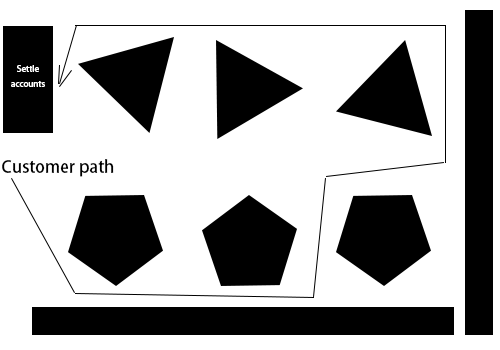
1. Use clean lines and simple shapes: Geometric layouts rely on simple shapes and clean lines to create a modern and sophisticated look. Use rectangles, squares, and triangles to create interesting displays and product arrangements.
2. Create focal points: Geometric layouts can be bold and eye-catching, so use this to your advantage by creating focal points in your displays. Use asymmetry and negative space to draw the eye to certain areas of the store.
3. Play with height and depth: Geometric layouts are great for creating interesting heights and depths in your displays. Use shelving, hanging displays, and other fixtures to add dimension to your store.
4. Use lighting to highlight displays: Proper lighting can make all the difference in a geometric store layout. Use spotlights and other types of lighting to highlight your displays and draw attention to certain areas of the store.
5. Keep it organized: While geometric layouts can be creative and unique, it's important to keep things organized and easy to navigate. Make sure there is enough space between displays and that products are clearly labeled and organized.
3. Conclusion
In conclusion, the proper shelving layout in a retail store is crucial for creating an enjoyable shopping experience for customers and maximizing sales. When deciding on the shelving materials, it is important to consider the durability, aesthetics, and cost-effectiveness. Moreover, different store layouts can have different advantages and disadvantages depending on the type of products sold and the target customer base. Retailers should carefully evaluate their store's needs and choose a shelving layout that effectively showcases their products and creates a comfortable and visually appealing environment for customers. Finally, seeking guidance from experienced professionals in the retail display industry can be extremely helpful in making informed decisions and optimizing the store's shelving layout.
Post time: Mar-02-2023

